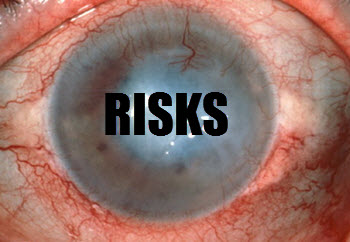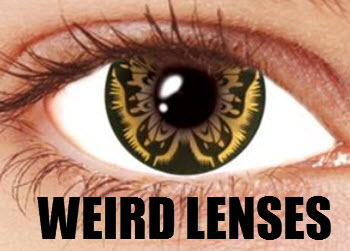Introduction to Animal-Inspired Decorative Eye Lenses
Decorative eye lenses, often referred to as cosmetic contact lenses, have gained popularity as a unique way to alter one’s visual appearance. These lenses come in a variety of designs, but among the most intriguing are those inspired by animals. Animal-inspired decorative lenses are celebrated for their creativity and boldness, replicating the eye characteristics of different animals, from real to fictional. These designs might mimic the eyes of cats, snakes, or even mythical creatures like werewolves, adding a distinct flair to one’s look.
Design and Features
Animal-inspired lenses are available with striking colors and patterns that capture the unique features of animal eyes. For instance, cat-eye lenses are famously known for their vertically slit pupils, providing a fierce and alluring appearance. On the other hand, snake eye lenses boast a special bifurcated pattern that gives a menacing yet fascinating look. These lenses offer a non-prescription option for those who do not require vision correction, but they can also be custom-made to suit corrective purposes if prescribed by an eye care professional.
Materials and Manufacturing
The production of these cosmetic lenses involves using a blend of water and polymers chosen for their flexibility and durability. These materials are crucial as they allow the lenses to retain their shape while ensuring comfort for the wearer. The intricate animal designs are embedded into the lenses using safe dyes that do not interfere with vision. The manufacturing process is sophisticated, balancing the aesthetics of the lenses with the need for them to be functional and safe.
Usage and Safety Considerations
It is of utmost importance to consult with an eye care professional before using any cosmetic lenses. This is to ascertain that they are safe for individual use. Poorly fitted or unsanitary lenses can lead to various eye problems, including infections, irritation, or more severe issues. To avert such risks, wearers must adhere to appropriate hygiene practices. This includes regularly cleaning the lenses using suitable solutions, inspecting them for damage before use, and ensuring they are always stored in a clean case. Importantly, these lenses should never be shared with others to prevent cross-contamination.
Regulation and Certification
In many regions, such as the European Union and the United States, decorative contact lenses are governed as medical devices. They are required to meet specified safety standards, which often entails obtaining a prescription even for lenses that do not correct vision. This regulatory oversight ensures that these lenses are safe and effective for public use. Consumers are strongly advised to procure lenses from reputable providers who adhere to these regulations, thereby avoiding counterfeit or non-certified products that might pose health risks.
To further explore the guidelines and safety standards related to decorative lenses, trusted sources like FDA on contact lenses provide valuable information. Moreover, certified optometrists can offer personalized advice and consultations to assist individuals in making informed decisions.
Historical Context of Decorative Contact Lenses
The appeal of altering one’s appearance through contact lenses dates back several decades as makeup use became mainstream. Initially, the focus was largely on lenses designed for prescription purposes, enhancing vision rather than aesthetics. However, as technology advanced and demand for cosmetic enhancements grew, lenses designed solely for decorative purposes emerged. Animal-inspired designs followed naturally, fueled by the human fascination with the animal kingdom and mythology.
As early prototypes of colored lenses gained popularity, manufacturers continuously improved the quality and safety of these products. This led to the development of the robust market for decorative lenses that we witness today. With innovation, designs have become more intricate, bringing every fantasy and interest into the realm of possibility.
The Market for Animal-Inspired Lenses
The market for these unique lenses caters to a diverse audience. Cosplayers, performers, and enthusiasts who revel in costume play and artistic expressions are among the primary consumers of animal-inspired lenses. These lenses serve as critical components for character portrayals, adding authenticity and a dramatic edge to performances or costumes.
Fashion and beauty influencers also embrace these lenses, setting trends and broadening the scope of style possibilities. Social media platforms have been instrumental in showcasing the transformative impact of these lenses, increasing their popularity among fashion-forward individuals who crave to make a bold statement.
Advanced Features and Innovations
Modern advancements in lens production have resulted in enhanced comfort, functionality, and options for customization. Silicone hydrogel materials are now frequently used in advanced designs for their ability to maintain moisture and allow significant oxygen permeability, thereby supporting eye health. Custom orders allow users to obtain lenses matching specific preferences for color intensity, design precision, and diameters.
Additionally, manufacturers continuously innovate to ensure the lenses remain user-friendly. New methods in printing technology allow for crisper and more realistic depictions of animal eye traits, ensuring that wearers enjoy an engaging experience without compromising on comfort or safety.
Future Trends and Considerations
The demand for distinct and creative self-expression tools like animal-inspired lenses is likely to continue. As technology evolves, we can anticipate further innovation within this niche, potentially leading to interactive lenses where the designs might change or animate depending on lighting or environmental factors.
However, as the market expands, it is also vital that regulatory bodies keep pace in updating guidelines to accommodate new technologies while ensuring user safety. Education around proper care, fitment, and sourcing will remain crucial in minimizing risks associated with decorative lenses.
Conclusion
Animal-inspired decorative eye lenses blend the realms of fashion, fantasy, and function, allowing individuals to explore new horizons of self-expression. While they present a fascinating avenue to transform one’s appearance, they require responsible use, guided by proper fitting and diligent care. By adhering to safety protocols and opting for certified products, wearers can enjoy the creative possibilities these lenses offer, enriching their experiences in personal styling and beyond. Through continued innovation and regulatory vigilance, these lenses will remain a vibrant facet of modern sartorial and cosmetic culture.



 Cosmetic contact lenses
Cosmetic contact lenses